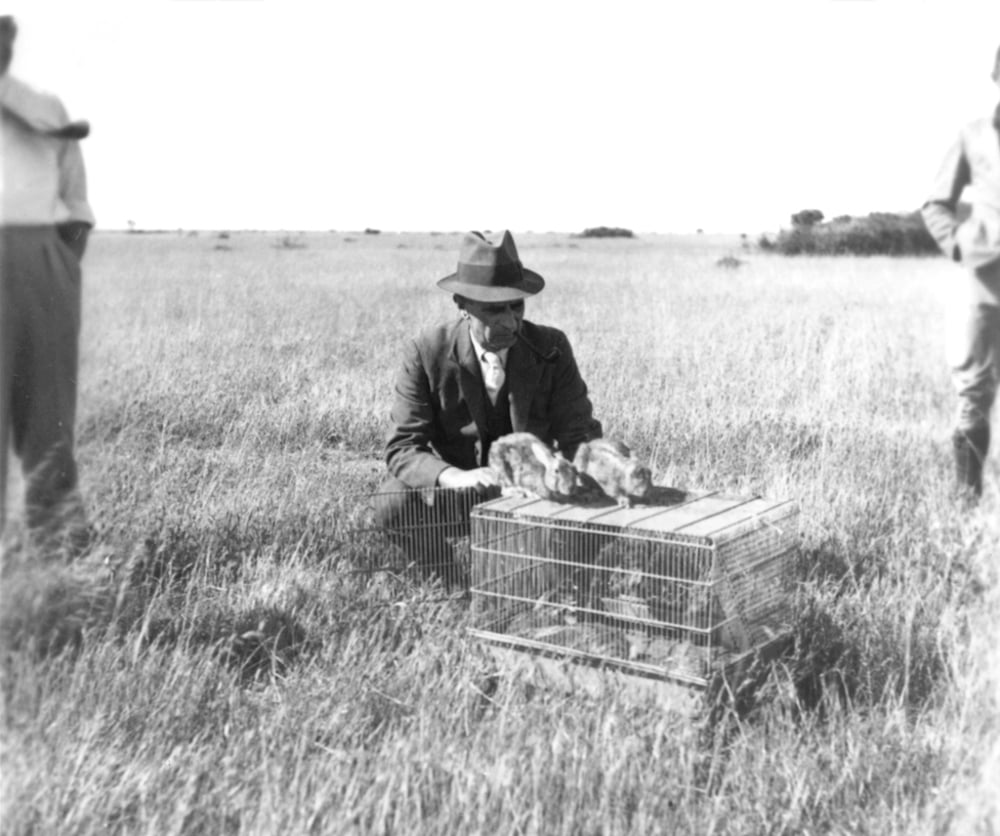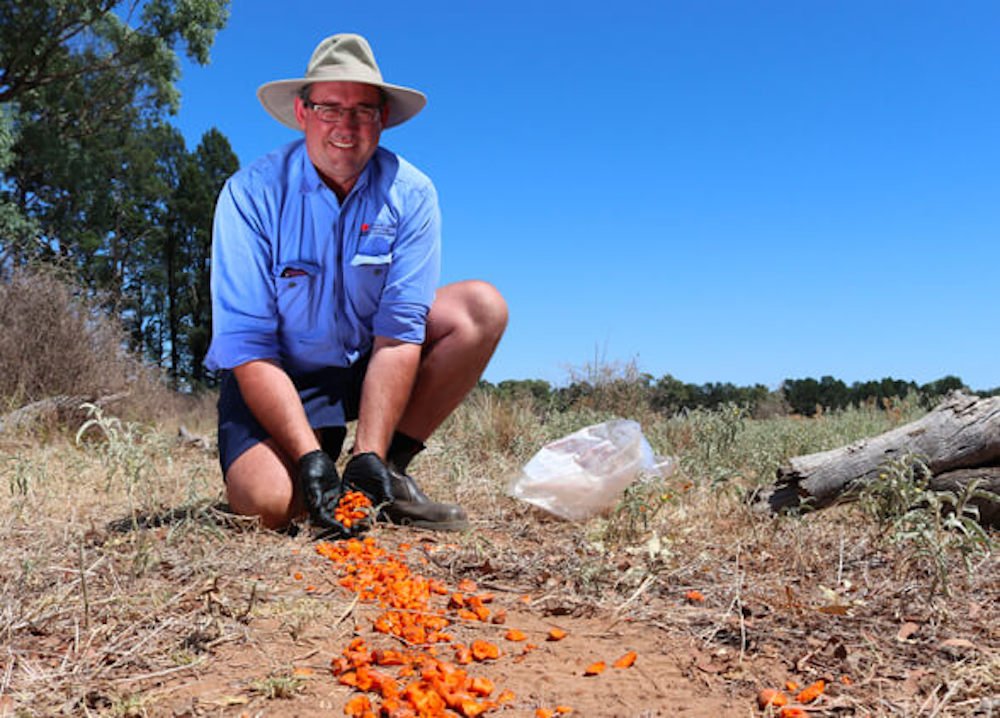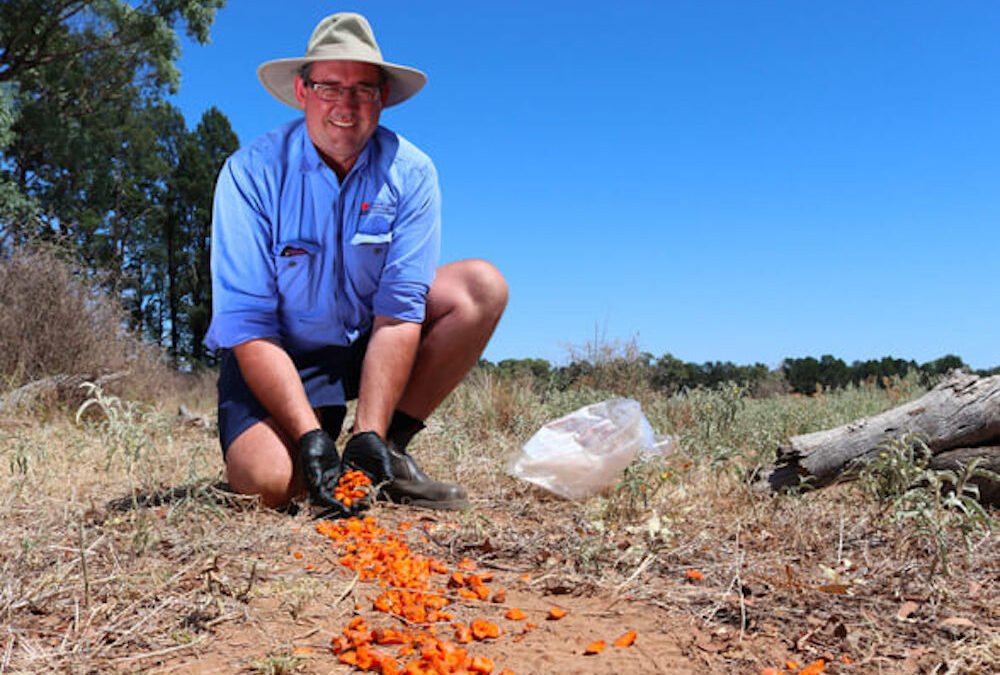A new report released today by the Centre for Invasive Species Solutions CEO, Andreas Glanznig, reveals the amazing impact of the programs controlling Australia’s rabbit population.
Since 2012, the Centre for Invasive Species Solutions has been working towards their long term rabbit biocontrol pipeline strategy, a more permanent solution for one of the most challenging problems facing the Australian landscape.
The strategy includes using AI, monitoring rabbit populations through satellite imaging, and introducing genetic biocontrol technologies to permanently reduce the pest population. This strategy would permanently solve Australia’s rabbit crisis, allowing both native plants and threatened animal species to recover. Once rabbit populations fall in inland Australia, the regeneration of native flora increases the habitat and food resources of native animals.

On a more scientific level, monitoring has revealed the release of the man-made rabbit disease virus, RHDV, has been the most important and cost-effective conservation action for small, threatened mammals in recent decades. By taking these first steps towards enduring action, scientists have been able to ensure a new future for Australia’s threatened plant and animal species.
And, as CEO Andreas Glanzing suggests, the environmental impact is only the beginning. “The value of new rabbit haemorrhagic disease virus variants naturalised since 2014 to Australian agriculture is expected to save $4 billion over the next 30 years”, Mr Glanznig said. “This builds on the benefits already achieved over a 60-year period of $81.8 billion, following the release of the myxoma virus in 1950 and the first rabbit haemorrhagic disease virus in 1995.”
Clearly, all hope is not lost for Glanzing and his colleagues. The new rabbit bio-control pipeline strategy provides a path to the future, and the possibility of positive change as rabbits are slowly removed from our ecosystems. “A long-term strategic approach to rabbit biocontrol R&D will ensure that Australia is not pushed onto the back foot in managing one of our most costly vertebrate pests,” says Glanzing. And that’s exactly what this new strategy aims to achieve.
Not as harmless as they seem
Rabbits have been around since the arrival of early European settlers to Australia in the 18th century. However, it wasn’t until the 19th century that they were released into the wild, and began breeding. Within 70 years of this release, rabbits had spread to cover 70% of Australia’s land.
Rabbits can begin producing at around four months old. Due to their short gestation period, and the ability for female rabbits to breed quickly after giving birth, this means a female rabbit can have up to 50-60 offspring per year, significantly growing the rabbit population.
This quick breeding produces problems for Australia’s native flora and fauna. Rabbits can eat around 15 percent of their body weight, five times greater than sheep and cattle. Excessive grazing, to maintain this intense diet, has resulted in soil erosion, and damage to native plants as their root systems are dug up. Their appearance in local environments has also led to an increase in fox and cat populations, who hunt native animals. As such, the presence of rabbits in Australian ecosystems affects 322 nationally threatened species.
Rabbits are also damaging to our economy, with significant funds being pumped into removal efforts. In fact, the total annual loss attributed to Rabbits is estimated at around $206 million.
A history of impact management
Australia’s attempt to control these damaging pests has been a long running scientific battle, one full of ups and downs.
In the 1950s, Australian scientists released the world’s first vertebrate pest biocontrol, Mxyoma Virus, which killed 99.8 percent of the rabbits it infected. However, the rabbit population rebounded to around 300 million by 1995.
That same year, we introduced the first rabbit haemorrhagic disease virus (RHDV1), which killed 98 percent of rabbits in arid areas. For a while, it seemed science had prevailed. Yet, in 2009, a benign endemic rabbit calicivirus began reducing the effect of RHDV1 by providing rabbits with partial protection, and the process of finding solutions for our rabbit infestation re-started.

In 2014, the unplanned arrival of a second rabbit haemorrhagic disease virus (RHDV2), reduced rabbit populations by 60 percent on average, and up to 80 percent in some populations. Three years later, scientists also released a new strain of the RHDV1 virus, which killed around 60% of rabbits nationally, but was still less effective than the unplanned RHDV2. Together, these viruses worked to significantly reduce the rabbit population.
Looking to the future
The new report released earlier today, Benefits of Rabbit Biocontrol in Australia: An Update, indicates that the control of these pests has resulted in huge benefits for primary producers and threatened species. And it’s all thanks to the work of scientists, governments, and land managers.

Rabbits have been around for centuries, and today they’re in our lives as both pets and pests. But these fuzzy creatures are more damaging than they first appear, and their impact on Australian flora and fauna has been colossal. For example, it takes less than one rabbit per square kilometre to prevent the successful growth of many native plants.
For over 70 years, Australia has been in a long running scientific battle with these animals, and the new report is sparking hope for a more positive future.
If you’re interested in other strategies being employed to save Australia’s native species, click here.

